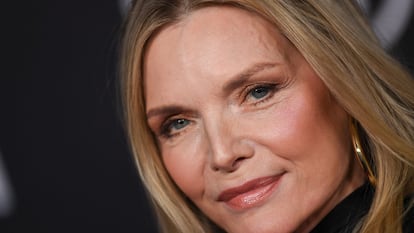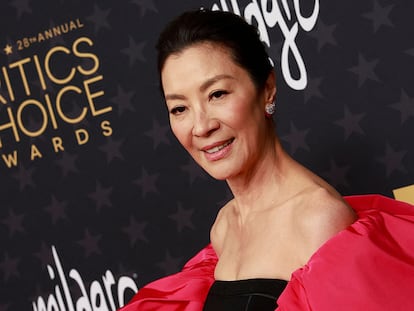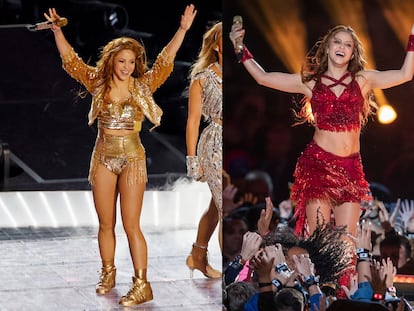Michelle Pfeiffer: ‘I didn’t set out to stop working, but I became so difficult in terms of my prerequisites’
After racking up awards and hits during the 1980s and 1990s, the actress decided to take long breaks from acting to spend time with her family away from Hollywood
There’s a video that’s over three decades old that reappears on social media every so often and causes a stir. In the viral clip, Michelle Pfeiffer, now 64, wields a whip in Tim Burton’s Batman Returns (1992) and, without the aid of special effects, uses her dexterity alone to tear the heads off four mannequins in a single take followed by a round of applause from the entire crew. The video’s virality demonstrates two things. First, it shows how intensely the actress prepared for a role that she was offered only after Annette Benning, Burton’s choice to play Catwoman, bowed out at the last minute because of her pregnancy. Second, it demonstrates Pfeiffer’s continued impact, despite the fact that, of late, she has only appeared on the big screen sporadically.
Reminder: Michelle Pfeiffer whipped the heads off those four mannequins IN ONE TAKE to thunderous applause from the Batman Returns crew! pic.twitter.com/wVqyH4qw6A
— Jarett Wieselman (@JarettSays) February 19, 2021
Asked about the viral clip, Pfeiffer says, “I did see that! It’s so crazy. I mean, it’s so nuts, right?... It really is like this character has nine lives. It just keeps kind of coming back.” She remembers that moment clearly and proudly. “It was fun, just because I love playing that character, and I got really good at that whip, and I was very pleased with myself, because it was something that my stuntwoman actually couldn’t do that I could do.” While Pfeiffer’s keeping the door open to reprising her role as Catwoman in the future, she’s currently back on screen as another superhero, the original Wasp, Janet Van Dyne, in Ant-Man and the Wasp: Quantumania, alongside Paul Rudd, Michael Douglas and Evangeline Lily. The Lost actress heaps praise on her on-screen mother: “Not only is she the most beautiful woman to have ever walked planet Earth and a great actor, she was also Catwoman, and that was the only superhero that when I was in my teens I would lay awake at night and fantasize about. She was so cool.” Pfeiffer usually inspires that kind of enthusiastic reaction in people. Indiana Jones and the Temple of Doom star Kate Capshaw, her close friend of more than 40 years, says that every time she sees her she needs a few minutes to recover from Pfeiffer’s beauty.
Director Peyton Reed dreamt of Pfeiffer’s participation in the Marvel movie. In fact, his vision was so clear that Reed hired an actress who looked like Pfeiffer to play the character (who appeared only briefly and in a mask) for the first installment of the franchise. Getting Pfeiffer on board wasn’t a given: she is as famous for the roles she has rejected as she is for her performances, having turned down Pretty Woman, Basic Instinct, The Silence of the Lambs, Bugsy and Thelma and Louise (the last film being the only one she regrets declining).
The actress has been in and out of movies by choice since 2000. Pfeiffer only takes on projects that challenge her or allow her to work with people she likes. She has little to prove; she’s had a prodigious career in terms of both variety and quality. She has done drama, comedy, musicals, thrillers and period pieces and portrayed a Disney villain as well as a superheroine in Marvel and DC movies. Her films have grossed over $7 billion at the box office, and she has racked up eight Golden Globe nominations (with six consecutive nods) and three Oscar nominations.
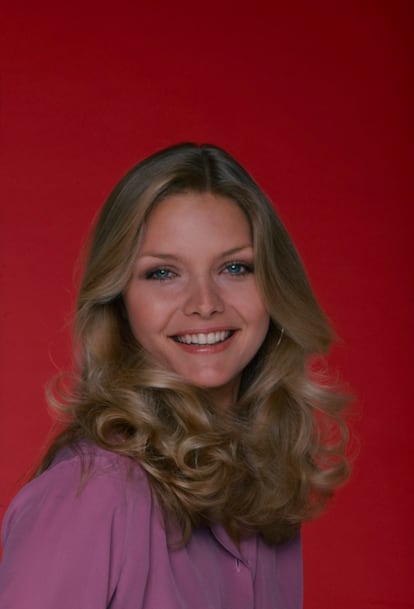
During the 1980s and 1990s, she was a true film goddess. Meryl Streep may have won all the awards, but Pfeiffer graced all the magazine covers. Most haven’t forgotten her. Paul Rudd recounted that when all the stars of the various Avengers movies gathered for the finale, Avengers: Endgame, no one caused more excitement than she did (and the group included half a dozen Oscar winners). “I remember walking around at the little mixer afterward, and having, like, [Mark] Ruffalo and [Chris] Hemsworth go, like, ‘Holy shit, it’s Michelle Pfeiffer.’ And there was a lot of that. Everyone’s just looking over at her and everyone’s a little bit nervous.”
Starting off on the wrong foot
Pfeiffer always knew she wanted to be an independent woman. At the age of 14, she lied about her age to get a job as a cashier in a supermarket. But as she was selling melons, she wondered if that was really what she wanted to do for the rest of her life. One day, as she recalled on her Instagram account, she signed up for the Miss Orange County beauty pageant. She won and went on to participate in the Miss California contest, where she came in sixth. But she wasn’t interested in winning; she had loftier goals for herself. Her hairdresser had told her that one of the pageant judges was an agent who was known to sign contestants. And he booked her; she left the beauty pageant without a crown but acquired an agent.
Small parts started coming her way and they were all “bombshell” roles. “What if people don’t think I’m sexy?” she wondered. “I’m going to look ridiculous.” No one thought so. And she set herself a maxim: “Every time I chose a role, I made sure it was something a little better than the previous one.”
Her lack of experience didn’t stop her from being hired to star in Grease 2. The film was probably one of the worst ideas of the 1980s, and that is saying a lot for the decade that produced films like Howard the Duck. The movie was such a failure that both director Brian de Palma and star Al Pacino refused to hire her for Scarface. They only gave in at the producer’s insistence. Today one of the most remembered scenes from the film is of Pfeiffer descending in a glass elevator in her slip dress.
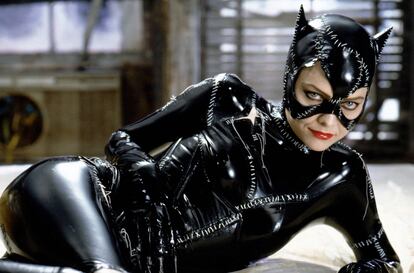
As the actress began to find success, she suffered from imposter syndrome. “I didn’t have any formal training. I didn’t come from Juilliard. I was getting by and learning in front of the world. So I’ve always had this feeling that one day they’re going to find out that I’m really a fraud, that I really don’t know what I’m doing,” she confessed. Her rise to stardom also required her to face the part she hates most about her job: the press. Interacting with the media felt like a punishment, perhaps because she understood the dangers of her environment. Shortly after settling in Hollywood, she was nearly abducted by the Breatharian sect, a cult that claims that one can live on sunlight alone. She was saved by the fact that her first husband, Peter Horton (the actor who played the literature professor Gary Shepherd on Thirtysomething), was preparing for a role in a film about cults. What he told her about his character made her see that she was experiencing the exact same thing.
Too beautiful for this world
One reason the press hounds Pfeiffer is the public’s obsession with her beauty, which continues to leave her friends speechless. That reaction makes her uncomfortable. “Sometimes it’s difficult living up to everyone’s expectations. People call me beautiful and sexy and all these things, but what does it mean? You know, I look at myself in the mirror some days, and I just don’t get it. I just don’t think I’m that beautiful or extraordinary looking, honestly... [I’m] conventionally pretty. I’ve always felt that’s how I am. I really don’t think I’m this incredibly beautiful creature everyone seems to think I am.” Jonathan Demme, who directed her in Married to the Mob (1988), delved into this topic in Premiere magazine after the movie’s release. “More than any other quote-unquote beautiful actress, Michelle has been handicapped by her appearance. She has such an overwhelming face that people have tended to cast her because of the way she looks.”
Pfeiffer’s beauty led many to believe she was just a pretty face. She doesn’t have a reputation for being an easy actress, which is Hollywood-speak for not being a pushover. She had her ups and downs with director Richard Donner in Ladyhawke (1985), the delightful medieval fable about an impossible love. Pfeiffer did not want her character to be merely an ethereal lady pining for her beloved. Ultimately, the script was changed, and today the movie is an undisputed cult classic. It was also the actress’s first step on the path to stardom.
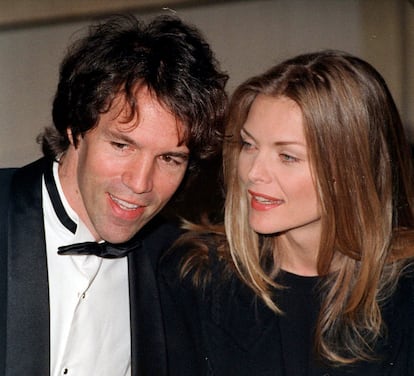
The second step was The Witches of Eastwick (1987), in which she fought Jack Nicholson’s demonic arts alongside Susan Sarandon and Cher. Her next role, in Married to the Mob, earned her the first Golden Globe nomination of her career. In 1988, she garnered her first Oscar nomination for her role in Dangerous Liaisons (1988), alongside Glenn Close, a young Uma Thurman and John Malkovich.
The next time she came close to winning the award was for The Fabulous Baker Boys (1989). The overhead shot in which she is dressed in a spectacular red dress and sings atop a grand piano became an iconic image. “Whatever she’s doing while she performs that song isn’t merely singing; it’s whatever Rita Hayworth did in Gilda and Marilyn Monroe did in Some Like It Hot, and I didn’t want her to stop,” enthused film critic Roger Ebert.
By this point, Pfeiffer’s talent was unquestioned, but she had to downplay her beauty to play the self-conscious waitress opposite Pacino in Frankie and Johnny (1991), a role originally written for and performed by Kathy Bates. Pfeiffer also gave credible performances as the sophisticated Countess Olenska in The Age of Innocence (1993) and as the innocent Southern housewife who traveled across the country to meet President Kennedy in Love Field (1992), which earned her a third Oscar nomination.
In the 1990s, she cemented her stardom and was hugely successful at the box office with Batman Returns (1992). She also founded her own production company, Via Rosa, through which she produced movies with roles that interested her like Dangerous Minds (1995) and One Fine Day (1996).
New priorities
In 1993, she adopted a baby girl, and months later she began her 30-year relationship with Ally McBeal and Big Little Lies producer David E. Kelley. At the beginning of the new millennium, she was still at the top of her game, but she decided to step away to spend more time with her family. They went to live on a ranch in San Francisco, where she could have privacy and do what she truly loves, like oil painting and putting on her tool belt to build things. As she explained, “I didn’t set out to stop working or it wasn’t my plan, but I became so difficult in terms of my prerequisites, in terms of: ‘Well, where does it shoot? How long does it shoot? What time of year does it shoot? Can I bring the kids? Is it during the school year?’ And then it was just too difficult to hire me, honestly. And I was okay with that.”
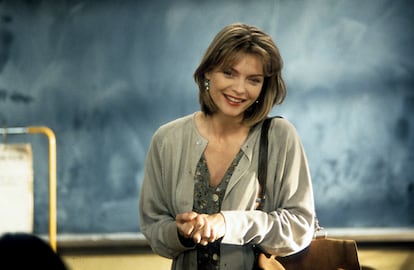
In recent years, her appearances on the big screen have become small affairs, while aging has been a recurring theme in almost all of the dreaded interviews she does. “All I really care about, is that I’m able to age gracefully and that I don’t ever look like a wax figure of myself,” she confessed to People in 1999. Almost a quarter of a century ago, she was already being asked about getting older.
Since her comeback, Pfeiffer only does what moves her. She alternates between blockbusters (Murder on the Orient Express and the Maleficent and Ant-Man movies) with small independent productions. In 2021, for French Exit, she received another Golden Globe nomination. For the sake of cinema and her public, let’s hope Pfeiffer has many more comebacks left in her.
Sign up for our weekly newsletter to get more English-language news coverage from EL PAÍS USA Edition
Tu suscripción se está usando en otro dispositivo
¿Quieres añadir otro usuario a tu suscripción?
Si continúas leyendo en este dispositivo, no se podrá leer en el otro.
FlechaTu suscripción se está usando en otro dispositivo y solo puedes acceder a EL PAÍS desde un dispositivo a la vez.
Si quieres compartir tu cuenta, cambia tu suscripción a la modalidad Premium, así podrás añadir otro usuario. Cada uno accederá con su propia cuenta de email, lo que os permitirá personalizar vuestra experiencia en EL PAÍS.
¿Tienes una suscripción de empresa? Accede aquí para contratar más cuentas.
En el caso de no saber quién está usando tu cuenta, te recomendamos cambiar tu contraseña aquí.
Si decides continuar compartiendo tu cuenta, este mensaje se mostrará en tu dispositivo y en el de la otra persona que está usando tu cuenta de forma indefinida, afectando a tu experiencia de lectura. Puedes consultar aquí los términos y condiciones de la suscripción digital.
